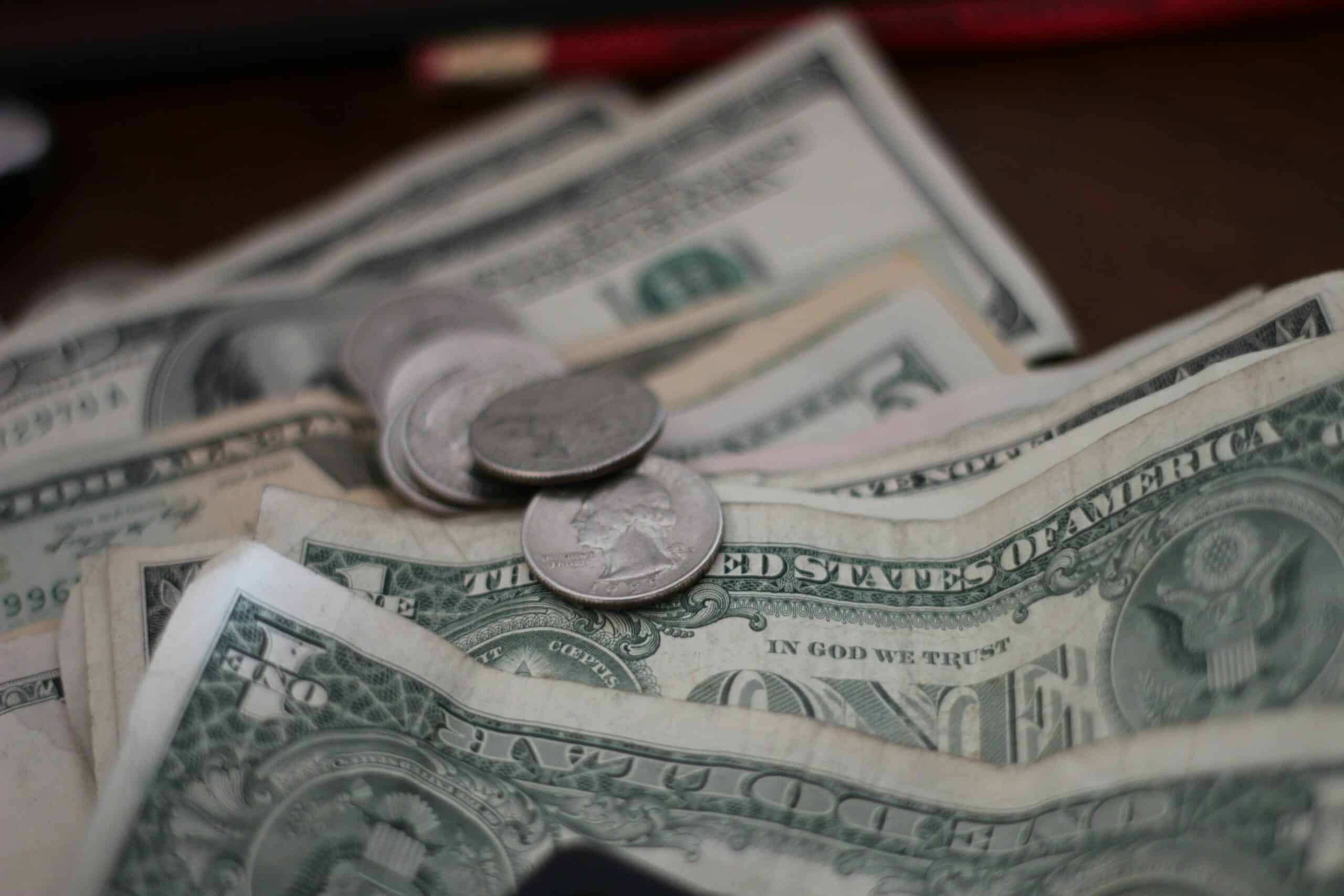
Photo by Mathieu Turle on Unsplash
US Dollar Climbs Over Trump Tariffs, Canadian Dollar Falls to 22-Year Low: But a Tariff Deal Could Call Off Trade War
February 3, 2025
With the imposition of President Donald Trump’s planned tariffs on Canada, Mexico, and China set to take effect on Feb. 4, as Reuters reported, the U.S. dollar (USD) has seen relative strength as it climbs in value against other currencies.
According to CTV News, the Canadian dollar (CAD) tumbled to a 22-year low of 68.13 cents per USD (or 1.4792 per U.S. dollar) on Feb. 3, alongside the news that the United States would be imposing 25% tariffs on Canadian goods — and a 10% tariff on Canadian energy — imported into the country.
The Mexican peso suffered a similar fate (21.2882 per U.S. dollar), a near three-year low, but then rose slightly to 20.481, up 0.95% against the dollar. Meanwhile, the U.S. dollar also gained ground against the Chinese yuan early in Asia’s morning on Monday (ticking upward by 0.36% to 7.3404 yuan in the offshore market, though failing to reach a previous record high of 7.3765 yuan, per Reuters). Mexico also faces a 25% tariff on its goods entering the U.S., while China faces an extra 10% on top of existing tariffs against its exports to the U.S.
Tensions may settle sooner rather than later, however. According to The National Post, there is hope for an early end to the trade war, as Mexican President Claudia Sheinbaum indicated that she and Trump had reached an agreement, with Mexico agreeing to place 10,000 of its soldiers at border postings over U.S. concerns over the flow of migrants and fentanyl into the country.
Describing the conversation as “friendly,” Trump took to Truth Social to post the following:
“I just spoke with President Claudia Sheinbaum of Mexico. It was a very friendly conversation wherein she agreed to immediately supply 10,000 Mexican Soldiers on the Border separating Mexico and the United States. These soldiers will be specifically designated to stop the flow of fentanyl, and illegal migrants into our Country,” Trump wrote.
“We further agreed to immediately pause the anticipated tariffs for a one month period during which we will have negotiations headed by Secretary of State Marco Rubio, Secretary of Treasury Scott Bessent, and Secretary of Commerce Howard Lutnick, and high-level Representatives of Mexico. I look forward to participating in those negotiations, with President Sheinbaum, as we attempt to achieve a ‘deal’ between our two Countries,” he continued.
Further, a spokesperson for Prime Minister Justin Trudeau indicated that he and Trump had shared a conversation the morning of Feb. 3, the first time the two had spoken since Trump’s Jan. 20 inauguration. Trump and Trudeau are scheduled to speak a second time later in the day.
US Dollar Rises, but Stock Market and Bitcoin Both Tumble in Response to Tariffs
While the U.S. dollar started an upward trajectory, the same could not be said for the stock market — or many leading cryptocurrencies, including Bitcoin. Bitcoin fell below $100,000, to a low of $95,279, as a result of the tariff news, per Cointelegraph. The price has since rebounded, as of 11:26 a.m. ET, to $98,856.
CNBC reported that, as of early morning on Feb. 3, Dow Jones Industrial Average futures were down by more than 600 points, S&P futures tumbled by 1.6%, and Nasdaq-100 futures fell by 1.7%.
Analysts cited by the outlet suggested that the Trump administration’s tariffs would exert downward pressure on the market while increasing costs to consumers — but also that they may be temporary in nature.
“Large tariffs pose downside risk to our S&P 500 earnings estimates and return expectations. If company managements decide to absorb the higher input costs, then profit margins would be squeezed. If companies pass along the higher costs to its end customers, then sales volumes may suffer. Firms may try to push back on their suppliers and ask them to absorb part of the cost of the tariff through lower prices. We estimate that every 5pp increase in the U.S. tariff rate would reduce S&P 500 EPS [earnings per share] by roughly 1-2%,” said David Kostin, chief U.S. equity strategist at Goldman Sachs.
“As a result, if sustained, the tariffs announced this weekend would reduce our S&P 500 EPS forecasts by roughly 2-3%, not taking into account any additional impact from major financial conditions tightening or a larger-than-expected effect of policy uncertainty on corporate or consumer behavior. Our economists describe the outlook as unclear but believe there is a substantial probability that the tariffs on Canada and Mexico will be temporary,” Kostin continued.
Chris Rupkey, chief economist at FWDBonds, was more concise — and condemnatory — in his remarks.
“We are stunned after the President’s announcement which is an abrupt retreat from the world as we know it. The stock market will crater on Monday morning with the first trade on the Dow lower by 1,000 points. America first apparently means the rest of the world is last and this announcement could do lasting damage to how America is seen in the rest of the world and turn our allies into adversaries right when the world is in an increasingly dangerous place,” Rupkey stated.
Canada and Mexico To Impose Retaliatory Tariffs on US Goods, China Taking the Fight to the World Trade Organization
In response to the imposition of the most recent U.S. tariffs, Canadian and Mexican leaders vowed retaliatory tariffs.
Prime Minister Justin Trudeau signaled a two-stage plan in which 25% tariffs would be imposed on certain American exports, The Financial Post reported, with $30 billion in goods being targeted as of Feb. 4, and an additional $125 billion three weeks after.
“Our response will also be far reaching and include everyday items such as American beer, wine and bourbon, fruits and fruit juices, including orange juice, along with vegetables, perfume, clothing and cheese,” Trudeau said during a Feb. 1 press conference.
“It’ll include major consumer products like household appliances, furniture and sports equipment, materials like lumber and plastics, along with much, much more,” he added.
Sheinbaum took to X on Feb. 1 to state her nation’s intentions.
“I’ve instructed my economy minister to implement the plan B we’ve been working on, which includes tariff and non-tariff measures in defense of Mexico’s interests,” Sheinbaum wrote. Exact details are yet to be revealed, but a separate CTV News report indicated tariffs ranging from 5% to 20% on various products — from pork, cheese, and fresh produce to manufactured steel and aluminum — could be in the cards.
Finally, as a second Reuters article detailed, Chinese leaders promised to fight the tariffs at the World Trade Organization, while also vowing to take unspecified “countermeasures” should the tariffs remain in place.
Recent News








